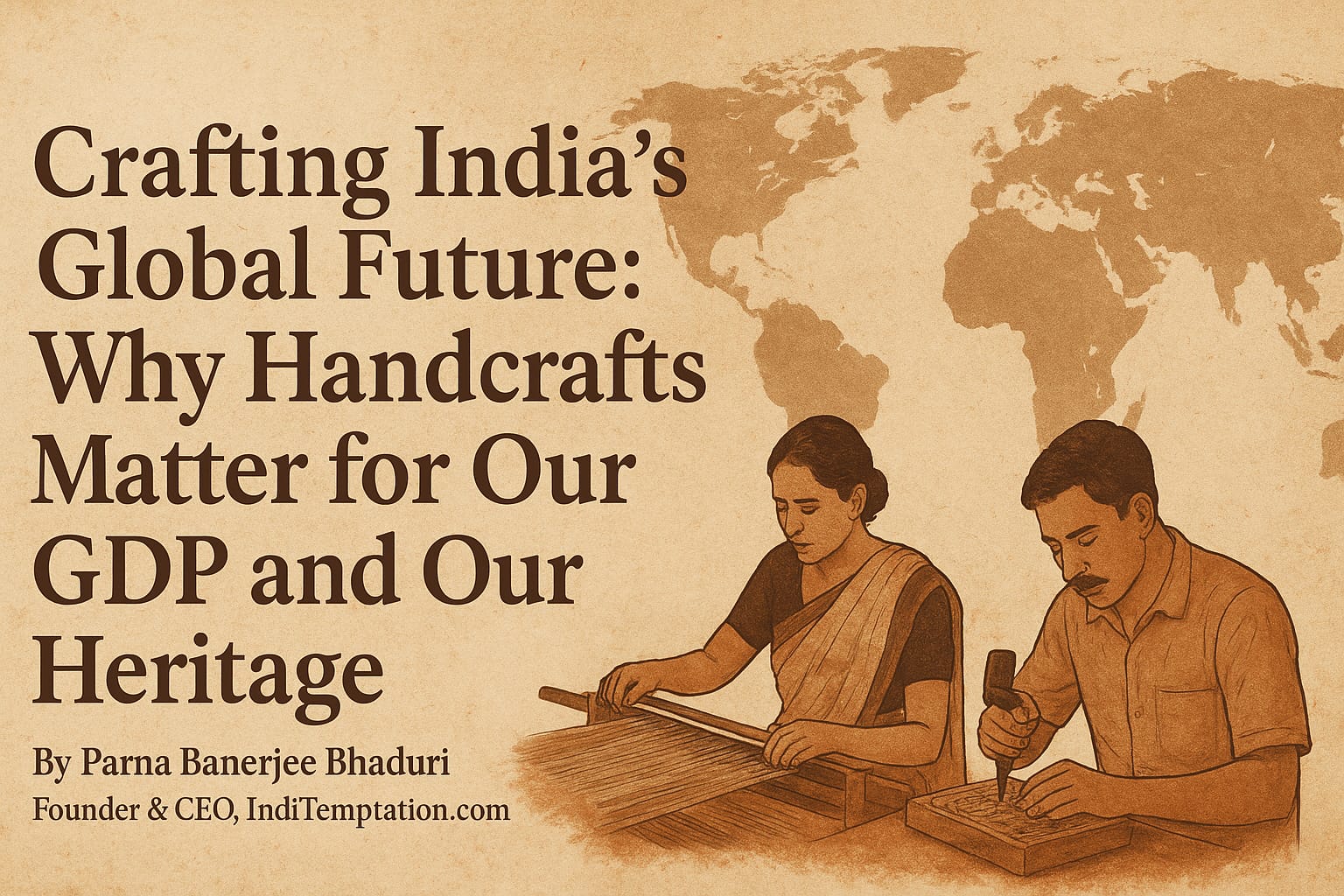Why Handcrafts Matter for Our GDP and Our Heritage.

There is something timeless about the way an Indian artisan works — the rhythmic beat of a loom, the scent of natural dyes, the careful carving of stone or wood that transforms raw material into emotion. These crafts are not just art forms; they are living legacies that hold centuries of knowledge, patience, and beauty.
In a rapidly globalizing world, bringing Indian handcrafts to international markets is not merely about expanding sales — it’s about giving our traditions the stage they deserve and empowering the people who keep them alive. Beyond heritage and culture, this movement has the potential to significantly strengthen India’s economy and contribute meaningfully to GDP growth.
⸻
A Global Market Waiting for Authenticity
The global handicraft market is valued at over USD 1.1 trillion (2024) and continues to grow steadily as conscious consumers seek authentic, sustainable, and handmade alternatives. Within this vast ecosystem, India’s contribution — around USD 4.5 billion domestically and steadily increasing in exports — shows immense potential for expansion.
The world is increasingly looking toward products with stories, sustainability, and soul — qualities deeply embedded in Indian craftsmanship.
⸻
A Livelihood Story Woven into the GDP
The handloom and handicraft sectors together contribute around 2% to India’s GDP and 10% to industrial production. But their importance goes beyond numbers. These crafts sustain millions of families, especially in rural India, where handwork remains a vital source of income and empowerment.
Every product sold internationally adds more than just export revenue — it uplifts a community, preserves a traditional skill, and circulates income through local economies. For a country like India, where creative labour and community-based production remain strong, global exposure to crafts can be a real driver of inclusive growth.
The Multiplier Effect: How Crafts Build Economies
When artisans gain fair access to international markets:
1. Foreign exchange inflows strengthen national GDP.
2. Value addition increases as handmade products earn higher margins than mass-produced goods.
3. Employment generation expands in rural and semi-urban regions.
4. Formalization and financial inclusion create a broader, healthier economic base.
5. Cultural branding enhances India’s soft power and boosts tourism.
Each handcrafted item, when exported, carries both economic and emotional value — a true example of culture turning into capital.
⸻
Building Bridges, Not Just Markets
Challenges remain — from global compliance standards and digital literacy to access to funding and logistics. What’s needed is not charity, but opportunity: fair platforms, transparent pricing, and training that helps artisans compete globally while maintaining their authenticity.
At IndiTemptation, the goal has always been simple — to connect India’s creative hands with appreciative hearts across the world. Through curated storytelling, design support, and fair trade practices, such efforts aim to ensure that every artisan feels seen, valued, and sustainable in their work.
⸻
A Call to Action
• To buyers: Choose handcrafts with provenance — every piece tells a story worth owning.
• To policymakers: Strengthen artisan export hubs, craft clusters, and design-to-market programs.
• To entrepreneurs: Build pathways that keep craft at the centre of value creation, not at the margins.
⸻
The Bigger Picture
If India’s share in the global craft trade increases even slightly, the impact could be transformative — in GDP growth, rural income, and cultural preservation. Globalizing Indian handcrafts is not about replacing tradition with commerce, but about ensuring that tradition continues to thrive because of commerce.
As these crafts travel beyond borders, they carry the fragrance of our soil, the skill of our people, and the story of a nation that grows while staying rooted.
With gratitude,
Parna Bhaduri Banerjee
Founder & CEO
Indi Temptation
